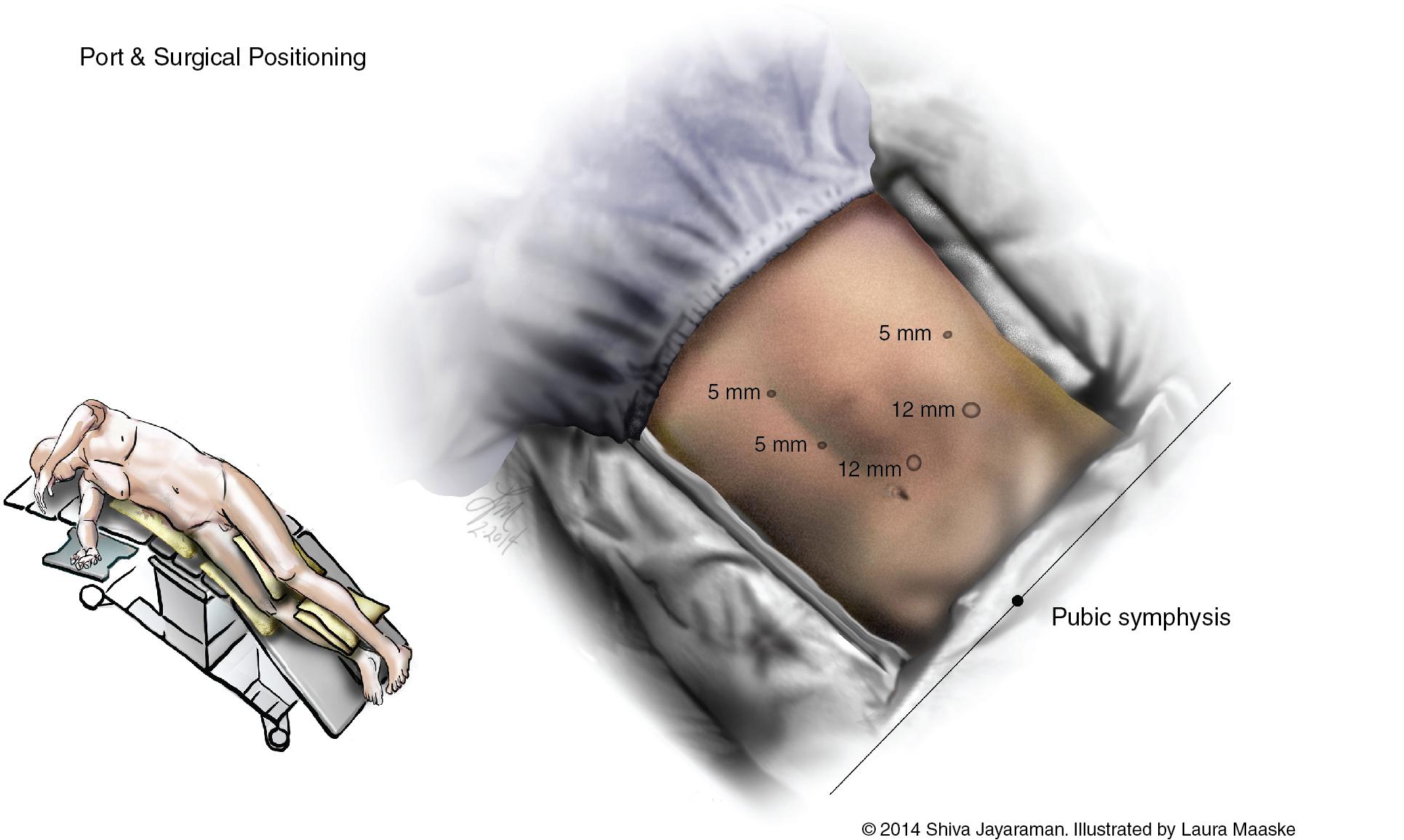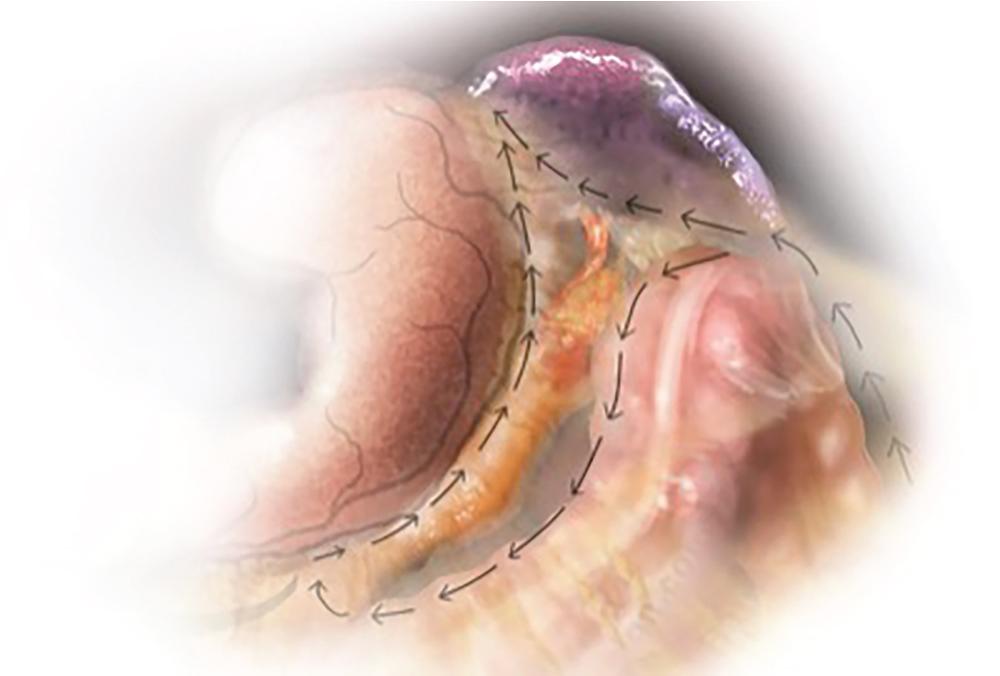Physical Address
304 North Cardinal St.
Dorchester Center, MA 02124
Minimally invasive distal and central pancreatectomies are well accepted as safe and effective surgical approaches for the management of left-sided pancreatic lesions. , Several variations exist in the minimally invasive techniques, which will be detailed in this chapter. The indications and outcomes for minimally invasive compared with open approaches are addressed elsewhere (see Chapters 117B and 127 ).
The two most common approaches for pancreatic mobilization in minimally invasive distal pancreatectomy are the medial and lateral approaches. A retrospective cohort study of 43 patients compared the medial and lateral approaches and demonstrated shorter operative times and less blood loss with the lateral approach, with no significant differences in rate of successful splenic preservation or rate of conversion to an open procedure. The choice of approach may depend on the lesion or anatomic factors intraoperatively. The techniques described in this chapter can be used in conjunction with one another to facilitate safe and optimal resection depending on the circumstances of the case.
The right lateral decubitus position is the most favorable positioning because of its excellent exposure ( Fig. 127B.1 ). The patient may also be secured in a modified right lateral decubitus in a 15- to 30-degree decubitus position for a more centrally located lesion. In these positions, gravity aids in retraction to facilitate exposure of the pancreas body and tail. With the bed flexed to expose more of the abdomen, the bed is tilted right side down. This position, combined with Reverse Trendelenburg will maximize gravity exposure of the tail and body of the pancreas. Left-side down tilting of the bed will flatten the patient to near supine and improve exposure of the neck of the pancreas and access to the portal vein–superior mesenteric vein (SMV) trunk. Alternatively, the patient can be positioned in the French position, supine on a split-leg operating table, allowing an assistant to work from between the patient’s legs.

The surgeon works from the patient’s right side. The procedure generally requires four to five trocars, as demonstrated in Fig. 127B.1 , and a 30-degree laparoscope. A 10-mm supraumbilical port, offset 1 cm to the left and cephalad, is the camera port. Two 5-mm ports are placed in the epigastrium, one along the left lateral costal margin, and a 12-mm port at the left midclavicular line, in line with the camera port at the supraumbilical level.
Start with mobilizing the splenic flexure of the colon to facilitate exposure of the inferior edge of the pancreas (see Chapters 117B and 117C ). Begin with the lateral attachments of the proximal descending colon, dividing along the white line of Toldt, then around the splenic flexure. Bluntly separate the plane between the mesocolon and Gerota’s fascia. Once completely mobilized, gravity will retract the colon down and medially, away from the left upper quadrant ( Fig. 127B.2 ). Divide short gastric vessels using an energy device, from caudad from cephalad. Enter into the lesser sac near the splenic hilum and divide the gastrocolic ligament from lateral to medial, which facilitates the stomach to medialize and the transverse colon to drop down, while avoiding dangling tissue from obscuring the view of the pancreas.

If the stomach remains an impediment to optimal exposure of the pancreas, gastric suspension can be achieved in several ways. A mechanical retractor, such as the Nathanson liver retractor, can be set up to retract the stomach. An assistant with a grasper may be used for the duration of the dissection. Alternatively, the “stomach roll-up technique” may provide steady retraction, by rotating the stomach on its longitudinal axis and suspending it upwards toward the abdominal wall. In this technique, the falciform is divided and an Endoloop is used to ligate the round ligament. The round ligament and Endoloop are passed through the lesser sac, deep to the stomach, then out through the anterior abdominal wall with a suture passer device.
After the pancreas is exposed, begin dividing the peritoneum along the inferior border of the pancreas, from lateral to medial (see Chapters 117B and 117C ). Vascular structures, including the inferior mesenteric vein and the SMV at its confluence with the splenic vein, are useful landmarks that are encountered along the inferior border of the pancreas (see Chapter 2 ). To aid in recognition of the SMV, the right gastroepiploic vein can be identified and followed into the SMV. These structures serve as landmarks for the extent of medial mobilization. Direct visualization of the lesion is important to guide the choice of site for pancreatic transection. The spleen may be medialized en-bloc with the pancreas by dividing its ligamentous attachments.
During mobilization, it may be difficult to visualize the index lesion. Indeed, some lesions may not be directly visible at all. Laparoscopic intraoperative ultrasound is a helpful tool to identify occult lesions (see Chapter 24 ). Ultrasound can also be used to confirm margins of a visible lesion before pancreatic transection.
Become a Clinical Tree membership for Full access and enjoy Unlimited articles
If you are a member. Log in here